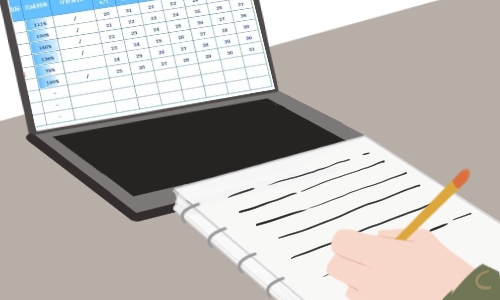精选文章 -->
精选冀教版九年级英语教案 精选一年级上册英语教案 精选高三英语复习教案15篇 精选大班幼儿英语教案 精选八年级英语教案人教版教育者有目的有计划有组织的对受教育者的身心发展进行教化培育,以现有的经验、学识推敲于人,为其解释各种现象、问题或行为,以增长能力经验。下面是小编给大家整理的小学英语微课教案设计模板5篇,希望对大家能有所帮助!
小学英语微课教案设计模板1
一、教学内容:part d & e
二、教学目标
1、复习巩固问候语how are you?及其答语,要求读音正确,语调自然。
2、复习巩固句型: how are you?i‘m fine/well/good,thank you。
3、激发学生英语学习兴趣,会唱歌曲how are you?
4、完成教学uint2。
三、教学重难点:
1、激发学生英语学习兴趣,会唱歌曲how are you?
四、教具准备:
磁带、录音机。
五、教学过程:
a. greeting
(the teacher stands at the door and greets the students as they come in the door.)
t: hello. hi.
(the teacher stands in front of the class and greets all the students again and prompts them to answer.)
t: hello.
ss: hello.
t:class begings.
s1: stand up.
t: hello, boys and girls.
ss: hello, miss que.
(the teacher looks at individual students and prompts them to answer.)
t: what’s your name?
s1: hello, my name is ….
t:how are you?
s1:i’m fine, thank you.
开起小火车,一个接一个和后面的小朋友打招呼。
b、presentation:
when we meet someone, we should say “how are you?” now, let’s watch and listen.
c、sing a song
1) 反复播放how are you ?让学生先熟悉曲调。
2)带领学生学歌词,并按音乐节奏做歌词诵读练习。
3)带领学生学唱歌曲。
4)引导学生替换歌词,如fine 可替换成well, good等。
d、play a game
1) 课前布置学生找一个或者作一个自己喜爱的卡通形象的手偶。
2)教师讲解游戏的做法,并进行示范。
3)小组内使用手偶开展对话游戏,用学过的语言进行交流:
s1: good morning/ afternoon/ evening. what’s your name?
s2: my name is …
s1: how are you?
s2:i’m fine/ well/ good. thank you .
e、practise
(1)活动1:listen and judge.
教师先向学生解释清楚题目的做法。
——how are you , helen?
——i’m fine , thank you.
请学生听录音,要求学生根据录音判断对话内容是否与图画意思一致,相符则为笑脸,否则为哭脸。
(2)活动2:listen and respond.
录音中,画面上的某个人物正在和另一个人打招呼。根据图片所示内容用已学句型作出应答。
师生互问,生生练习问答。
(3)学习活动3:listen and colour
要求学生在听录音后,根据录音内容将字母涂上合适的颜色。
(4)学习活动4:look and act
要求学生先看图,然后依据图意说英语并表演。
教师组织学生操练句型。
——is this david?
——no./…
f、assign homework
(1)听录音,进行对话。
(2)鼓励学生平时用本单元所学的日常交际用语相互打招呼。
(3)鼓励学有余力的学生学习其他的打招呼用语。
g、 writing on the blackboard
unit 2 how are you?
——how are you?
——i‘m fine/well/good,thank you.
小学英语微课教案设计模板2
一、教材分析:
本课是冀教版小学英语(三年级起始版)第四册第三单元(All about me)的第4个新授课,Lesson16:How do you go to school? 经过一年半的学习,四年级下学期孩子们学习的重点逐渐过渡到各种基本句型。本单元前面三课分别学习了关于年龄、身高、住处的句子,本课教材以How do you go to school?为切入点,重点学习关于出行方式的交流:询问别人、介绍自己的出行方式。
二、学生分析:
孩子们经过一年半的学习,基本了解了字母:26个字母及常见字母组合的发音规则,词汇的学习方法:单词音形意用的结合、音节、重音及不同词类(名、动、数、形、冠等)的用法特点,初步体会英语句子的语序与汉语的不同,但对于句子结构及变化还比较陌生。本课内容对于孩子们来说并不陌生,Book3 L16已学习过四种出行方式by bus, by car, by bike, by taxi和句子:How do you go to school? I go to school by ____? 另一种出行方式on foot /walk,dives me及选择此种出行方式的原因表述学生相对陌生。但我校学生学习英语较早,一二年级有了两年的口语学习,还有近1/3有课外学习经历或正在进行,这些内容对于他们可能都不陌生。
基于以上分析,本课时目标制定如下。
三、教学目标:
1、知识技能目标:
A. 学生能够运用所学句型Do you walk to school? How do you go to school? I go to ___ by___ / on foot...询问、表达适合自己的出行方式。
B. 学生知道句子的变化是和人称有关系的,并能尝试运用所学句子介绍和询问他人的出行方式:Does he/she walk to school? How dooes he/she go to school? He/she goes to school by___ / on foot...
2、 文化目标:
尝试了解不同地区人们选择不同出行方式:山区孩子、牧民(草原)、江南居民及西方国家等。
3、学习策略目标:
学生知道句子的变化是有规律可循的,并引导尝试找出这些规律: A.和人称变化的关系; B.不同句式之间的关系等。
初步构建“单词——短语——句子”的建构学习模式。
4.情感态度目标:
通过寻找句子规律及了解不同人们的出行方式,引导学生体会英语学习是有规律可循的,Englishi is easy! 及交流开阔自己的眼界English is fun!
四、教学重难点:
1、教学重点:学生能够运用所学句型Do you walk to school? How do you go to school? I go to ___ by___ / on foot...询问、表达适合自己的出行方式。
2、教学难点:学生知道句子的变化是和人称有关系的,并能尝试运用所学句子介绍和询问他人的出行方式:Does he/she walk to school? How does he/she go to school? He/she goes to school by___ / on foot...
五、预习作业:(Choose
1. Read N1 and fill in the blanks.(☆☆☆☆)
How do they go to school?Why?(为什么)
Kim
Jenny
Steven
Danny
me 2. Where do you live ? Is it far or near your school?Do you walk to school?(☆☆☆)
3. Where do you like to go on weekends? 3 sentences. (☆☆☆)
六、教学过程:
Class Opening
I. Revision:
a. Group to group.
What do you like to do on weekends?
Where do you like to go on weekends?
b. Free talk between the teacher and children
T: Where do you live ? Is it far or near your school?Do you walk to school? How do you go to school?
Ss: …
New Concepts
I. N1 and N2.
T:Do you know how Kim, Jenny, Steven and Danny go to school?
板书:school
1. Read N1 in pairs and learn the words and sentences the students don’t know.
2. Role play between T and Ss.
(1) T-Kim, Ss-Danny.
T: Kim, do you walk to school? 板书: Do I /you walk to school.?
Ss: Yes, I walk to school. /I go to school on foot. 板书:Do I /you go to school on foot ?
T: Why?
Ss: I live near the school.
(2) Ss-Danny, T-Kim.
Ss: How do you go to school, Kim? 板书:How Do I /you walk to school.?
T: I live near the school. So I walk to school. So I go to school on foot(3) So: I live far from school. So I go to school by bus.
I ‘m hungry. So I want to eat. …
(4)Chant: How do you go to school. On foot, on foot. / Walk, walk.
3. Learn about P2-4.
II. How does he/she go to school?
1. Try to find.
T: How does Kim go to school? She goes to school on foot /walks to school.
How does Jenny go to school? She goes to school by bus. She lives far from school.
How does Steven go to school? He goes to school by car. Hia dad drives him.How does Danny go to school? He goes to school by bike. He rides his bike.
板书:Does he/she walk to school? He/she goes to school by___ / on foot...
比较,找规律。
Tip: 除了“你和我”,“一个”不放过,“动”就加s/es,“do”替不重复!
2. Practice in pairs.
How does he/she go to school?Why?(为什么)
Kim
Jenny
Steven
Danny
me
3. How do they go to school?
图片山区孩子、牧民(草原)、江南居民及西方
Class Closing
I. Make a survey and share. (☆☆☆)
Where do you want to go…?How does he/she go to school?Why?
Kim
Jenny
II. What do you like to do on weekends? 3 sentences. (☆☆☆)
小学英语微课教案设计模板3
3B Unit 3 Is this your pencil?
教学内容:Story time
教学目标:
1. 能听懂、会说、会读单词isn’t、that’s、pen pencil pencil case
2. 能听懂、会说、会读日常用语This isn’t my pencil. Is this /that your pencil? Yes, it is. No, it isn’t.
3. 能正确地理解并朗读对话内容,在教师的引导和帮助下尝试表演课文内容。
4. 树立团结友爱、帮助同学的助人为乐的精神,培养正确的价值观。
教学重点:
1. 句型:Is this /that your pencil?以及回答Yes, it is. No, it isn’t.
2. 词汇:isn’t、that’s、pen pencil pencil case
教学难点:
1. 能在情景下正确运用句型Is this /that your …?的用法和区别。
2. 词汇:No,it isn’t的发音。
教学准备:
1. 多媒体 2. 准备道具:丢失物品
教学过程:
Step1 Warm-up
Say a rhyme: open the window
Game: Listen, point and say
T: 1. window door blackboard 学生边指物体边说a…同时教师说完整的句子,This is…/ That is…
2.rubber T:rubber 学生学过指着rubber T: This is my rubber, where’s your rubber?(中文)
引导学生用This is my…的句型。
3.pen T:pen 部分学生应该知道。T:Look, this is a pen.然后老师说show us your pen .
Step2 Presentation
1.Learn: pencil No,it isn’t.
T:Is this a pen? S:No,it isn’t. 学生不会的话,老师提示:yes or no?Teach:No,it isn’t.(中文) 反复问学生,操练No,it isn’t.
T:It’s a pencil. I have a pencil , this is my pencil. Do you have a pencil?Show it to your classmate。让学生互相展示一下自己的铅笔。
2、learn:pencil case
T:Look,this is a pen,this is a pencil. I can put them in a pencil case.
读四个文具,然后做游戏。
3. Play a game
T: Look, here’s a box,(今天早上我在地上捡了个文具,放在了里面,文具是事先从一些学生那里拿的)
a:Try to guess!
Learn:Is this a ….
S:Is this a rubber? T: No, it isn’t. 多玩一会游戏 让学生感知 No,it isn’t的意思,再开始跟读。
Learn: No,it isn’t. isn’t=is not
b:Let’s open it,OK?
2.teach :Yes,it is.
S:Is this a pen ? T: Yes, T: Yes,it is.
3,Learn: Is this your..?
T: Hello,__. Is this your pen ? S: No ,it isn’t.(多问几个学生?)
T: Who can help me find the owner? (让学生帮助找到失主。)
4. teach “Is that your …?” “That’s my ….”
T: Is that your pencil?
S: Yes, it is.
T-S
T: There are many things here, rubber, …, we can find their owner after class.
Step3 Storytime.
1. Show Mike,
T: Look, who’s he? Ss: Mike
T: He has a nice pencil, too, T:Is this Mike’s pencil ? Let’s ask mike. 先让学生个别问 再说麦克听不清,全班问。引出This isn’t my pen. Ti听-读-模仿
2. Watch and answer
a: What is Mike looking for?
b:What colour is Mike’s pencil?
Watch again
Who helps Mike? b:What does Liu Tao say? 模范句子 注意语音语调。
c: What does Yang Ling say?
A: Does Mike find it?
By the way: What does he say?
4 Follow the cartoon
5 Showtime
Step4 Production
每个丢失物品的背后都有一个着急寻找的身影,相信你捡到了也很乐意帮忙吧!
情景:你跟你的小伙伴在走廊上玩耍的时候看到了一支很漂亮的铅笔,于是你们捡起来,开心的找到了它的主人。
You can use:
Hello,__
Is this/that your pencil/…?
What’s this/that?
Yes,it is./No,it isn’t.
Here you are. Thank you.
板书: Unit2 Is this your pencil?
rubber Is this/that your pencil?
Pen Yes, it is. / No, it isn’t.
pencil
pencil case
教学反思:本节课上的内容是Story time,整节课上下来发现学生的掌握情况不是很好。总结了以下几点:第一对教材的把握还不是很到位;第二对学生的学习能力没有了解清楚,教惯了高年级,对低年级了解不够。第三铺垫的过多了,没有考虑到学生的接受能力。在今后的教学中要注重自身的语音语调,以及评价的及时性和真实性。
小学英语微课教案设计模板4
Unit3 Is this your pencil?(period 2)
Step 1. Warm up
Greeting
Step2. Revision
a. T: Look at the blackboard.Can you guess“What’s that?”
(PPT出示Is that a...)
S:Is that a pencil?
T:Yes,it is.It’s a pencil.whose pencil is it?
S:it’s Mike’s.
T:Who helps Mike find his pencil?
S:Yangling and LiuTao.
T:Where’s the pencil?
S:在桌子底下
T:Yes,it’s under the desk,on the floor.
b. Read the story.
c. Act the story.
d. Help WangBing find his pencil case.(拓展表演)
Step3. Presentation
1.Learn the new words
a. T: We help Wang Bing find his pencil ,do you know what’s in the pencil?Let’s have a look?What’s this ?
S: It’s a ruler.(教读)
The same way teach: crayon ,school bag
b.Play a game (review words)
c.Spell the words
d.Show the stationaries to classmates:
This is my...
That’s my...
2.Play a game: Fun time
a. Answer the question
b. Play a game (出示游戏方法,让学生知道该怎么玩游戏)
c. Consolidation
失物招领
T: This morning.I got sth.in the classroom,whose are they ?Can you help me find their owner?(事先收集一下同学的学习用品)
S:(学生帮老师寻找失主)
T:Good job! I hope everyone can be helpful to your classmates.
d.Learn: Rhyme time
Oh,here’s a ruler too,is this your ruler?
S;No,it isn’t.
T:Where’s the ruler?
S: 在地上
T:Yes,it’s on the floor.(教读) 板书floor
T: Where’s the ruler?
S:It’s on the floor
T: It’s on the floor,beside the door (教读) 板书door
T(出示图片)Who’s he ?He’s Mr.Fuller.(教读)
Let’s say “Hello” to Mr. Fuller.
S: Hello,Mr. Fuller.
T:Let’s learn this rhyme ,its name is “A ruler”
出示歌谣句子,逐句跟读,跟节奏伴读。
Step3 Homework
Read the words Read the rhyme Find the owner
反思:1.整节课复习了story time ,新授fun time 和rhyme time ,每个环节都是由游戏过渡而来,看似松散,实则都在老师的掌握之中。
2.思路清晰,趣味性强,句型在游戏中掌握的比较好,但是在寻找失物的时候,学生活动的时间还可以再长一点,在检查学生活动时也要关注其他同学的活动情况。
3.整节课主线比较清晰,在rhyme 的时候让学生感受到了韵脚,这样易于学生的掌握。
姜主任:关注语音语调、关注语言、关注习惯、关注评价。
小学英语微课教案设计模板5
【教材解读】
本单元的话题是谈论天气情况和周末活动。Story time 以日记的形式记录Yang Ling周末的一天, 让学生进一步认识和理解一般过去时的用法。教师可以利用学生用书五年级上册Unit7 At weekends的词汇设计教学活动,要求学生运用一般过去时描述刚过去的周末活动。
【学习目标】
1. 学生能初步能理解并且会听、会说、会读和会拼写单词及词组:cloudy, rainy, sunny, windy 和会运用句型:It was sunny / cloudy / windy / rainy.
2. 学生能初步听懂并且会说、会读单词show, interesting, weather, high, honey, ant, bee, cloud, sky, rain
3. 学生能初步感知动词过去式的不规则变化及读音
4. 学生能初步感知天气表达的句型
5. 学生能够对英语书写日记格式有一定的了解
【教学重点】
1. 学生能初步能理解并且会听、会说、会读和会拼写单词及词组:cloudy, rainy, sunny, windy 和会运用句型:It was sunny / cloudy / windy / rainy.
2. 学生能初步听懂并且会说、会读单词show, interesting, weather, high, honey, ant, bee, cloud, sky, rain,、
3. 学生能初步感知动词过去式的不规则变化及读音
4. 学生能初步感知天气表达的句型
【导学过程】
Step 1 Warm up
Greeting
Free talk
T: Hello, boys and girls.
Would you know something more about me?
Two days ago, I was in Shanghai. Do you know Shanghai ?
It’s a big and beautiful city. I
Review : was(am的过去式) ago
But now ,I am in Zhangjiagang. It’s beautiful, too.
利用简单的两句话,区分时态的不同
3.T: Can you let me know something about you?
Look at the screen, you can choose one part to tell me something about you.
出示 Favourite Food, Favourite Animal, Hobbies三个话题
在Favourite Food话题中引出本课相关单词dumplings, honey
在Favourite Animal话题中引出本课相关单词parrot 延伸到parrot show
在Hobbies话题中引出I like drawing and writing diaries very much.
Teach: diaries diary
T:Look ,these are my pictures. Let’s look at them.
Teach: sunny cloudy windy rainy
T: These pictures are about the weather.
Teach: weather
Step 2. Presentation
1.show a picture
T: This is Yang Ling.
She likes drawing and writing diaries ,too.
出示日记抬头部分
T: This is a diary of hers. What a day!
What day is it today? Sunday
What date is it today? 20th September(9月20号)
渗透英文日记的书写格式
引出课题Unit 2 What a day! T:Let’s look at Yang Ling’s pictures.
What can you see in the picture?
(1)S:I can see some children in the park.
T:Who are they?
S: Su Hai, Mike, Liu Tao and Yang Ling.
(2) We can see some parrots in the park.
(3) fly kites
(4) rain
4.Let’s talk 出示课文相关图片展开讨论
Look and match 在此过程中教授动词过去式的特殊变化形式
go→went see→saw become→became fly→flew are→were
Then read the sentences in the right orders. (Teach: wet)
5.Read the diary by yourself, then finish the exercise. (T/F)
6.Read the diary
找出表达天气变化的句子,再过渡到事件变化的句子
在此活动中教授bring过去式brought, can过去式could
Step 3.Consolidation
1.Let’s read
a.Read after one.
b.Read together.
c.Read one by one.
2.T:What do you think of her day?
Happy? Interesting? Terrible? Bad?
Step 4.Homework
1. Read the text.
2. Try to retell the diary according to YL’s pictures.
板书设计:
Unit 2 What a day!
It was sunny / cloudy / windy / rainy.
go→went fly→flew
see→saw are→were
become→became bring→brought
小学英语微课教案设计模板相关文章:
★ 小学英语教案万能模板
★ 小学英语教案设计人教版模板
★ 小学英语老师教案范文四篇
★ 小学英语优秀教案范例四篇
★ 小学英语备课教案
★ 小学英语教案最新精选范文
★ 小学生六年级英语的教案模板
★ 优秀小学六年级英语教案模板
★ 小班英语教案通用模板
★ 小学英语活动优秀训练教案





